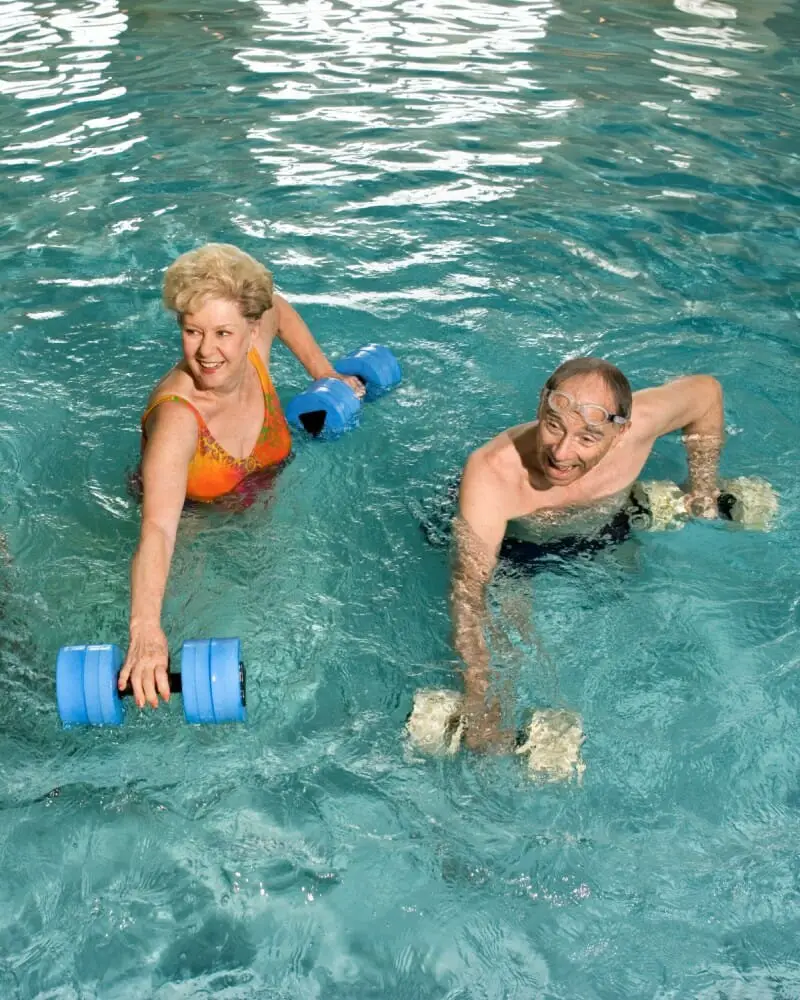
Arthritis is a common condition that affects millions of people around the world. It causes pain, stiffness, and inflammation in the joints and can significantly impact a person’s quality of life. While there is no cure for arthritis, there are several ways to manage its symptoms and improve joint health. One of the most effective ways is through exercise.
Understanding Arthritis
Arthritis is a complex and multifaceted condition that affects millions of people worldwide. It is a term used to describe more than 100 types of joint diseases, each with its own unique set of symptoms and causes. While arthritis is commonly associated with older adults, it can affect people of all ages, including children.
What is Arthritis?
Arthritis is a condition that causes inflammation in one or more joints, leading to pain, stiffness, and decreased mobility. The most common types of arthritis are Osteoarthritis and Rheumatoid Arthritis, which are degenerative and autoimmune conditions respectively.
Osteoarthritis: This is the most common form of arthritis, affecting millions of people worldwide. It occurs when the cartilage cushioning the joints wears down over time, leading to bone-on-bone contact and irritation. Osteoarthritis can affect any joint in the body, but it is most commonly found in the hands, hips, knees, and spine.
Rheumatoid Arthritis: This is an autoimmune disease that causes the immune system to attack the joint lining, resulting in inflammation and damage to the joint. Rheumatoid Arthritis can affect any joint in the body, but it is most commonly found in the hands, feet, and wrists. Unlike Osteoarthritis, Rheumatoid Arthritis can also cause systemic symptoms, such as fatigue, fever, and weight loss.
Different Types of Arthritis
In addition to Osteoarthritis and Rheumatoid Arthritis, there are many other types of arthritis, including:
- Psoriatic Arthritis: A type of arthritis that affects people with psoriasis, causing joint pain, stiffness, and swelling.
- Ankylosing Spondylitis: A type of arthritis that affects the spine and can cause stiffness and pain in the neck, back, and hips.
- Gout: A type of arthritis that occurs when uric acid crystals build up in the joints, causing pain and inflammation.
- Lupus: An autoimmune disease that can cause joint pain and inflammation, as well as a range of other symptoms.
Common Symptoms and Causes
Arthritis symptoms vary depending on the type of arthritis you have, but common symptoms include joint pain, stiffness, and swelling. In some cases, arthritis can also cause redness, warmth, and decreased range of motion in the affected joint.
The causes of arthritis are complex and multifactorial. Some types of arthritis, such as Osteoarthritis, can result from joint overuse, injury, or genetics. Other types, such as Rheumatoid Arthritis, are thought to be caused by a combination of genetic and environmental factors.
Being overweight can also put you at an increased risk for developing arthritis, as it places extra stress on your joints. Additionally, certain lifestyle factors, such as smoking and a sedentary lifestyle, can increase your risk for developing arthritis.
If you are experiencing joint pain, stiffness, or swelling, it is important to speak with your healthcare provider. They can help you determine the underlying cause of your symptoms and develop an appropriate treatment plan.

The Benefits of Exercise for Arthritis
Improved Joint Mobility and Flexibility
Arthritis is a condition that affects millions of people worldwide. It can cause pain, stiffness, and swelling in the joints, making it difficult to move. However, exercise can play a vital role in managing the symptoms of arthritis. Regular exercise can improve joint mobility and flexibility, which can help prevent and reduce the symptoms of arthritis. Range-of-motion exercises that involve moving the joints in different directions can help maintain flexibility.
For example, stretching exercises can help improve flexibility and reduce stiffness in the joints. These exercises can be done daily, and they are easy to perform. They can also help improve your range of motion, making it easier to perform daily activities like reaching for objects or bending down to pick something up.
Strengthening Muscles Around Joints
Strengthening exercises can also help reduce the burden placed on the joints, helping to relieve pain and improve joint function. Stronger muscles around the joints can help support the joint and reduce stress on it. This can be particularly helpful for people with arthritis, as it can help reduce pain and improve function.
For example, resistance training exercises like weight lifting can help build muscle strength and endurance. These exercises can be done with weights or resistance bands, and they can be tailored to your individual needs. Strengthening exercises can also improve muscle strength and endurance, making everyday activities easier.
Reducing Pain and Inflammation
During exercise, the body releases endorphins, which are natural painkillers. These endorphins can help alleviate pain caused by arthritis. Prescribed medication and non-pharmacological interventions like hot and cold therapy can also be beneficial in reducing inflammation and pain.
For example, hot and cold therapy can be used to reduce pain and inflammation. Hot therapy, such as a warm bath or shower, can help reduce stiffness and improve joint function. Cold therapy, such as an ice pack, can help reduce swelling and inflammation.
Enhancing Overall Quality of Life
Engaging in regular exercise will help you maintain a healthy weight, reduce your risk of chronic diseases such as high blood pressure and diabetes, and enhance your overall quality of life. Exercise can also improve your mental health by reducing stress and anxiety.
For example, aerobic exercise, such as walking or cycling, can help improve cardiovascular health and reduce the risk of chronic diseases. This can help improve your overall quality of life and reduce the risk of developing other health problems.
In conclusion, exercise can play a vital role in managing the symptoms of arthritis. It can improve joint mobility and flexibility, strengthen muscles around the joints, reduce pain and inflammation, and enhance overall quality of life. If you have arthritis, talk to your doctor about developing an exercise program that is safe and effective for you.
Best Exercises for Arthritis Sufferers
Arthritis is a common condition that affects millions of people worldwide. This condition can cause pain, stiffness, and swelling in the joints, making it difficult to perform everyday tasks. However, regular exercise can help reduce arthritis symptoms and improve joint function. Here are some of the best exercises for arthritis sufferers:
Low-Impact Aerobic Activities
Low-impact aerobic activities such as walking, cycling, and swimming are excellent exercises for people with arthritis. These exercises can help increase cardiovascular endurance, promote weight loss, and reduce arthritis symptoms. Because of the low-impact nature of these exercises, they do not put extreme stress on your joints as high-impact activities might. Additionally, these exercises can be easily modified to suit your fitness level and physical abilities.
Strength Training
Strength training is another great exercise for people with arthritis. This exercise helps build muscle and improves joint function in people with arthritis. Strength training can be as simple as using resistance bands to perform basic arm curls or going to the gym to use weight machines. This exercise can help increase your overall strength and make it easier to perform everyday tasks.
Flexibility and Stretching Exercises
Flexibility and stretching exercises are essential for maintaining joint mobility in people with arthritis. These exercises can help loosen up stiff muscles and joints while also contributing to relaxation and stress reduction. Yoga is an excellent example of a flexibility exercise that can help improve joint mobility and reduce arthritis symptoms. Additionally, stretching exercises can be easily incorporated into your daily routine, making them a convenient and effective way to manage arthritis symptoms.
Balance and Stability Exercises
Balance and stability exercises are crucial for people with arthritis, as they help improve joint control and balance. These exercises can reduce the risk of falls and injury in people with arthritis. Balance and stability exercises may involve standing on one leg or using equipment like a wobble board. These exercises can be easily modified to suit your fitness level and physical abilities, making them a safe and effective way to manage arthritis symptoms.
Overall, regular exercise is an essential component of managing arthritis symptoms. By incorporating low-impact aerobic activities, strength training, flexibility and stretching exercises, and balance and stability exercises into your routine, you can improve joint function and reduce arthritis symptoms. It is essential to consult with your doctor or physical therapist before starting any exercise program to ensure that it is safe and appropriate for your individual needs.
Precautions and Safety Tips for Exercising with Arthritis
Arthritis can be a debilitating condition that affects millions of people worldwide. It is a condition that causes inflammation in the joints, leading to pain, stiffness, and reduced mobility. However, exercise can be an effective way to manage arthritis symptoms and improve joint health. In this article, we’ll explore some precautions and safety tips for exercising with arthritis.
Consult Your Doctor Before Starting a New Exercise Program
Before starting an exercise program, it’s essential to consult your doctor to ensure that it is safe for you to engage in physical activity. Your doctor can also provide specific guidelines based on your arthritis type and severity, ensuring that you don’t aggravate your arthritis symptoms. They may also recommend working with a physical therapist to develop an exercise program tailored to your needs.
Listen to Your Body and Modify Exercises as Needed
Although exercise can be beneficial for arthritis, it is essential always to listen to your body and not push beyond your limits. If something feels uncomfortable or painful, stop immediately. Always modify exercises to make them comfortable and safe for you. For example, if you experience knee pain, try low-impact exercises such as swimming or cycling instead of running or jumping.
It’s also essential to pay attention to the signals your body is sending you during exercise. If you feel fatigued or notice any swelling or redness in your joints, it’s time to take a break and rest.
Warm Up and Cool Down Properly
Before exercise, it’s crucial to warm up your joints and muscles to reduce the risk of injury. A proper warm-up can include gentle stretches, range-of-motion exercises, and light aerobic activity, such as walking or cycling. This will help increase blood flow to your muscles and joints, preparing them for more intense activity.
At the end of your exercise, cool down with some stretching to return your body to a resting state. Stretching can help reduce muscle soreness and stiffness, and improve flexibility. It’s also an excellent opportunity to focus on your breathing and relaxation techniques, which can help reduce stress and tension in your body.
Avoid High-Impact Activities and Overexertion
Avoid high-impact activities that can put excessive pressure and stress on your joints, such as jumping or running. These activities can cause significant pain and inflammation, making arthritis symptoms worse. Instead, opt for low-impact activities such as swimming, cycling, or yoga.
It’s also essential to avoid over-exercising, as too much physical exertion can exacerbate your arthritis symptoms. Start slowly and gradually increase the intensity and duration of your exercise over time. Be sure to take breaks and rest when needed, and don’t push yourself beyond your limits.
Overall, exercise can be an effective way to manage arthritis symptoms and improve joint health. By incorporating low-impact, strengthening, flexibility, and balance exercises into your routine, you can reduce pain, inflammation, and improve overall fitness. Always remember to consult your doctor before starting any exercise program and listen to your body to modify exercises as necessary to make them safe and effective.
